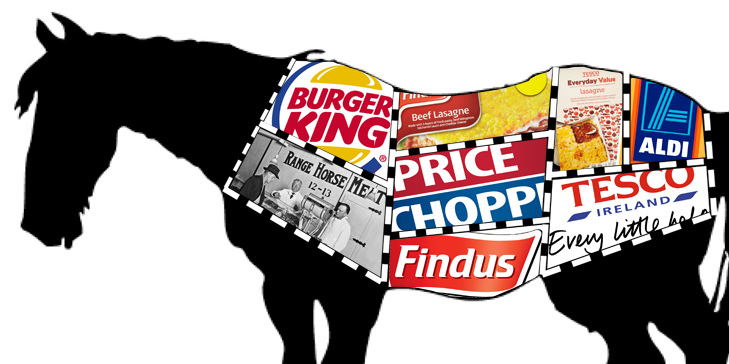
February 19, 2013, by ICCSR
No Hiding Place in the YouTube Era
Salutary Lessons in Supply Chain Management from the Horsemeat Scandal
Having begun as a relatively contained problem of contamination, originally detected through routine DNA testing of burger meat by the Irish Food Safety agency, the horsemeat scandal continues to astound. The public is now rightly shocked by its sheer scale and scope. One senses a major crisis when Government Ministers summon industry chiefs and blame and finger-pointing begin.
The public’s trust in meat supply chains, if not food supply more generally, has been badly damaged. Whatever its effects on future regulation of the industry, there are salutary lessons for all in food supply chains, from the consumer right back to the primary producers, farmers and growers.
Much of the comment has been about complexity in food supply. In fact most food supply chains are, relatively speaking, not overly complex in comparison to many products. Much food production is relatively simple with a small number of processing stages. What is true is that food often travels long distances but this is not new and has been routine historically for some categories (think New Zealand lamb). What does seem unusual in this case, at least to the outsider, is the amount of trading and change of ownership in raw materials that appears to have occurred.
The debacle does raise fundamental issues for responsible supply chain strategy and practice. Can the retailer guarantee to the consumer that food products are assured in terms of supply, irrespective of the complexity of the supply chain or distance travelled? Retailers in general do not own their supply chains but, as the major players offering contracts to supply, they exercise great power. As always, with power comes responsibility.
The first responsibility is complete and sure knowledge on product composition – in a variation of the well–known Ronseal claim – it must be what it says on the tin!
The second responsibility is source and provenance – assuredness not only of where food products have come from but that appropriate standards have been met at all stages of processing and supply. Simply put, there are no hiding places for the primes in the supply chain. Major retailers and food producers cannot use the ‘we didn’t know’ defence. The public expects them to know. There are lessons here from the international clothing industry where retailers and brand owners have had to respond to consumer concerns on methods of clothing production. There is of course a big stick – the media is hungry for news and sooner or later malpractice uncovered is rapidly and widely disseminated – YouTube beckons.
The third responsibility is the most challenging – appropriate rewards for all supply chain players. Squeeze the chain a little and improvements may be found and cost efficiencies realised – squeeze it to the bone (pun intended) and ultimately the very assuredness that retailers and consumers seek is compromised. All players that have a stake in the supply chain must have reasonable returns. Many have commented on the downward trend in average food prices in the last three decades. We as consumers must also realise that the era of very cheap food, as with very cheap clothes, comes at a cost that is often too great.
There are other lessons – contingency management in a crisis – the first detection was done by an Irish agency but UK retailers were slow to respond. Clearly governments have a role but the prime players must shoulder their responsibilities. What is clear is that getting the supply chain decisions right and exercising power and control in a responsible way will mean that contingency management is a rarity. The horsemeat scandal could be one of those events that stays in both corporate memory and the public’s memory, changing attitudes to supply chains fundamentally.
by Bart MacCarthy, Professor of Operations Management, Nottingham University Business School
Image byfatuousplatitudes, reproduced under Creative Commons License (CC BY-NC-SA 2.0) source: http://www.flickr.com/photos/fatuousplatitudes/8458992357/

I think that Bart makes some very interesting points here- and raises 3 key areas of responsibility within the meat supply chain. The more that I see in the media, the more it reminds me of the challenges facing the footwear and apparel sector in the 1980s-1990s-2000s. These recent events, on the surface of it is a different issue (horsemeat getting sold as beef vs sweat shops and child labour), however the root cause remains incredibly similar- accountability and transparency and trust within the supply chain. The question is – how successful has the footwear and apparel sector been in dealing with this issues? Can we learn from how best practice has evolved in other sectors? Or is this a whole new kettle of fish?
Wendy, I think there are parallels but like all supply chain issues there are idiosyncrasies to do with structures, relationships and power. Particularly in this case the main production in the apparel sector is in developing economies. I see governments in these countries and other international agencies having a major role in defining and enforcing standards. European food supply chains should be reliable without strong government intervention , e.g. we shouldn’t need the government to guarantee that meat sourced from France for products sold in the UK is what it says it is – a wake-up call for the profitable retailer sector I think. On your point about whether things have improved in apparel, in my view yes in in many cases but not all – but that of course requires a well –funded research study…….